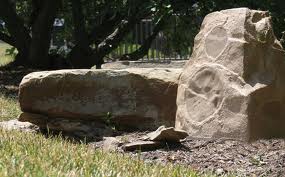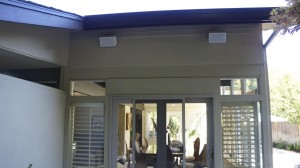So every year I throw seasonal and holiday parties both inside my home and out. I am not just talking about your usual holidays like Fourth of July, Christmas, Thanksgiving, etc. but also holidays like Cinco-de Mayo and Halloween. I have decided to add a speck of musical entertainment to the mix for my upcoming deck Halloween party by installing an outdoor entertainment system to my deck. I just have this vision of everyone in their costumes mingling, having drinks and candy, and listening to theme music. Who knows, maybe a thriller dance may break out! Needless to say, my vision sold me on the idea and I went all out installing the music system to my deck.
 Let me tell you, this was not an easy task. For you installation rookies like myself, please feel free to steal some pointers from the instructions below. Trust me, it’s worth it to read ideas first.
Let me tell you, this was not an easy task. For you installation rookies like myself, please feel free to steal some pointers from the instructions below. Trust me, it’s worth it to read ideas first.
Speakers
Speakers are obviously a chief consideration. All outdoor-rated speakers have a few things in common — but all should be waterproof. Most outdoor speakers today have rubber grommets for the wire to enter and sealed compartments to connect the external wires to the speaker some use standard “binding posts” that are gold plated for added protection from corrosion. Look for brands with longer warranties (some offer limited lifetime warranties) to help your customer avoid future hassles.
Speaker grilles are usually made of plastic or epoxy-covered metal to withstand the elements, and the speakers themselves are usually high-impact plastic. The individual speaker drivers (like the woofers and the tweeters) are made from polypropylene, aluminum, titanium, or some other material that holds up well outdoors.
 The range of outdoor speaker styles has expanded recently. Besides the standard box speakers that mount on a yoke affixed to a post or a wall, you can get speakers disguised as rocks, tree stumps, planters, and even hanging coconuts. I’ll concentrate here on box speakers and planter speakers.
The range of outdoor speaker styles has expanded recently. Besides the standard box speakers that mount on a yoke affixed to a post or a wall, you can get speakers disguised as rocks, tree stumps, planters, and even hanging coconuts. I’ll concentrate here on box speakers and planter speakers.
Wire or Not?
Even though you don’t need to select the wire, it is good to make sure your sound guy is using the right type. Very simply, direct burial (DB) speaker wire is the only type to use outdoors. Standard in-wall wire or zip-cord will break down in the sunlight and weather. DB wire is both UV resistant and moisture resistant. In most cases, the minimum wire gauge is 16. It’s almost never necessary to go larger than 12 gauge.
You can skip wire entirely and use wireless speakers. They range from inexpensive — about $80 each — to around $600 each. Cheap wireless speakers are attractive because they generally use batteries to power the wireless receiver and the small amp built into it. The downsides are they chew up batteries at a rapid pace, and the sound quality is pretty low; they may also produce occasional dead air. I recommend them only if you have no alternative. TIC Corp. carries self-contained systems.
The better — and more expensive — systems require line voltage (120 volts) at the speakers. You’ll need to get an electrician to run some conduit for a weatherproof outlet. A good transmitter-receiver combo (actually two receivers, one for the left speaker and one for the right) will run about $600. KEF Audio makes a good-quality system for that price.
Placing the Sound
 You are creating a deck to augment the lifestyle of your customers, so you interview them and find out how the deck will be used and design it accordingly. An audio installer does the same thing — and depending on what the customer tells him, there may be some additional deck design issues for you to consider.
You are creating a deck to augment the lifestyle of your customers, so you interview them and find out how the deck will be used and design it accordingly. An audio installer does the same thing — and depending on what the customer tells him, there may be some additional deck design issues for you to consider.
First, the location of the speakers dictates everything else. The two major variations of box-type speaker placement are on-house and on-post. A third variation is planter speakers.
On-house placement works well if you want to project the music onto the deck and into the surrounding area (large backyard, beach, pool, and the like). The speaker can be pointed downward to try to contain the music on the deck, but then neighbors behind the deck will hear it at a louder volume. On-house speakers don’t require you to make any special changes to the deck, so your job doesn’t change.
On-post placement, in contrast, restricts the sound overflow by directing the music toward the house. If the sound guy specs on-post speakers, you’ll need to coordinate with him so he can run wire.
Planter speakers radiate sound in a circular pattern (called “omnidirectional”). They can be placed almost anywhere on a deck and yield good sound. Like on-post speakers, they need wires run to them, so again, you’ll need to coordinate with your sound guy.
Good Luck with your new sound system, and remember if you need help don’t ask me, ask a professional.

